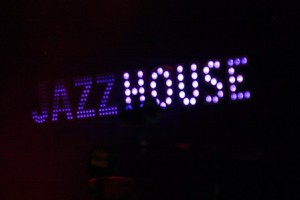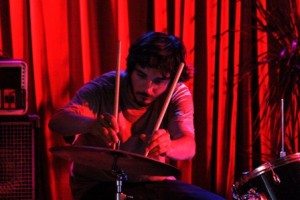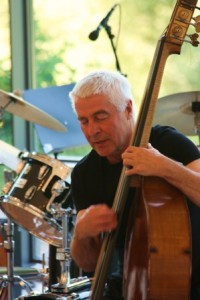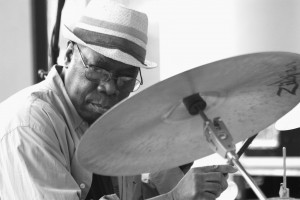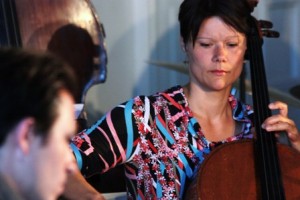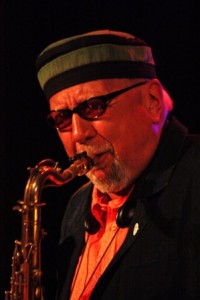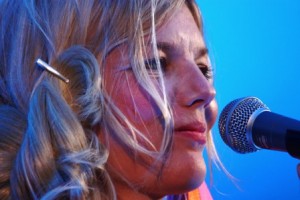COPENHAGEN JAZZ FESTIVAL
July 5-7, 2011
Review by Seth Rogovoy
(COPENHAGEN, Denmark) – The storybook city of Hans Christian Andersen, so picturesque at times it seems impossibly like a movie set, and you’re waiting for a director to yell “strike the set” and down will come the charmingly false facades, is in the midst of its annual 10-day jazz festival, and that’s no illusion. In fact, the Copenhagen Jazz Festival is one of the longest-running and most venerable of its kind in the world, and judging from the artists, both known and unknown, it attracts, and even more so, judging from the audiences that jam every venue, from a corner bookstore to an improvised third-floor theater to a nightclub to a concert hall, this is a city that takes its jazz and its attendant musics quite seriously.
It also knows how to have fun, and like all great festivals, its definition of jazz is quite expansive, embracing blues, funk, fusion, African, pop, experimental and indie-rock. But mostly it’s about jazz, and it’s all over this city of a half million, a decentralized festival that has no headquarters other than the one that exists in the program book itself, as the performances are spread out and take place at art academies, state galleries, outdoor stages in plazas and near canals, genuine jazz clubs, record stores, and, of course, in genuine concert halls, where people flock to hear world-renowned performers this year including Sonny Rollins, Bobby McFerrin, and Keith Jarrett, reunited with Gary Peacock and Jack DeJohnette.
Also on hand are Randy Brecker in an unusual pairing with jam-band pioneers Medeski Martin and Wood, Gary Burton, Joey DeFrancesco, Terence Blanchard, Brad Mehldau and Joshua Redman.
But those are just the marquee names. For those who live in Copenhagen, the chance to see those greats is a boon, and maybe it takes a festival to bring them to this harbor town. But for a visitor to this North Sea island perched between the mainland just a pebble’s throw from Germany and across the water from Sweden, the festival provides dozens if not hundreds of opportunities to soak in Denmark’s musical culture. And the verdict is that this small nation has had its ears tuned to the outside world, has been processing what it’s hearing, and is turning it around and sending it out again with a uniquely Scandinavian accent. Not for any reason, after all, is Denmark the land of Soren Kierkegaard, the father of existentialism, a philosophy as much as any that can be said to represent many of the virtues and inclinations of jazz, if jazz were to be philosophical. Existence, as the saying goes, certainly precedes essence in jazz; that could well serve as a definition of improvisation.
Take the Barry Guy and Torben Snekkestad Duo, which performed on Wednesday afternoon in the State Sessions series at the Statens Museum for Kunst, Denmark’s national art gallery. Saxophonist Snekkestad has obviously studied his John Zorn (as have apparently many of Denmark’s musicians – Zorn is probably the single most underrated influence on young jazz players around the world), as Snekkestad played the entirety of his instrument, make it snap, crackle and pop with whistles, honks, trills and the mere sound of breath, along with the more conventional musical tones that musicians are taught to play on their instrument.
In combination with Barry Guy, the director and founder of the London Jazz Composers Orchestra and a phenomenal bass soloist and improviser, Snekkestad was an expressive player, going from free noise to passages of intense lyricism and soul, even venturing into Sonny Rollins-on-the-bridge territory at times. His was an expressionistic style that didn’t rely on intellectualism to get its point across – Snekkestad’s playing was imbued with feeling and emotion, and spoke directly to the heart.
Snekkestad was on a double bill with American drummer and bandleader Andrew Cyrille, a powerful force in jazz who seemingly can’t get arrested back home but who is honored abroad, as he was here. Joined by American bassist Ben Street and Danish pianist Soren Kjaergaard, Cyrille plays drums like Cecil Taylor plays piano – he reimagines all the possibilities inherent in the technology and reinvents the musician’s approach to the instrument. Kjaergaard and Cyrille were brilliant conversationalists, talking back and forth to each other through their instruments, while Street provided subtle underpinning to the entire affair, magically laying down an ambient canvas of tonal dynamics upon which Kjaergaard and Cyrille painted their masterpieces.
In the late afternoon, a group called the Sydband performed on a stage perched overlooking the popular Nyhavn Canal, playing classic Dixieland and swing music for an audience of suntanners and nostalgia buffs, while inside the walls of a neighboring former castle, now home to the Danish Academy of Fine Arts, pianist Soren Muller was joined by saxophonist Dick Oatts and the Soma String Trio for a concert of pop-inflected jazz in the vein of recent efforts by Bad Plus, Brad Mehldau and Christopher Riley.
Muller was a gregarious, talkative host — alas, in Danish, but even an American can make out names like “Neil Young,” “Stravinsky,” and “Liverpool Rondo,” and figure out by deduction to whom that compostion paid tribute. The arrangements for the Soma string trio blended beautifully in this setting with Muller’s own trio, including bass and drums, and his Beatles tribute, as well as his rendition of Neil Young’s “Philadelphia,” from the movie of the same name, was a welcome revival of that overlooked gem of a melody. Oatts is a great player, but in this setting, both dynamically and tonally, his instrument was overwhelming and imbalanced and perhaps not suited to what was otherwise a more gentle, lyrical approach dominated, really, by strings and percussion. Perhaps the thought was to provide contrast, but there was so much beauty in the piano and strings that the saxophone merely came across as intrusive to the arrangements.
Speaking of lyrical beauty, the venerable Charles Lloyd, who has made his mark by playing softly, slowly, and building great tension through both, performed in the city’s legendary Copenhagen Jazz House later on Wednesday night. Lloyd is a generous bandleader who features his players often, and he was joined by a great band. But when he played, all eyes and ears were on him, whether he was running up and down a modal scale, as is his wont, playing a Turkish-, klezmer-, or Native American-sounding melody on saxophone or flute, before exploding the tension and handing it over to one of his sidemen.
If you were to make a movie that required a mid-20th-century bebop nightclub, all you’d need to do is bring the cameras into the Copenhagen Jazz House, set up and begin filming. The place is dark, the bar is neon red, and you can practically hear the sound of Charlie Parker and Thelonious Monk echoing from the walls.
On Thursday evening, the local quartet Mother played at the Husets Teater at Halmtorvet, located on the top floor of an old building in an improvised cabaret setting that didn’t require the open-air crack den out back (which this intrepid if somewhat naïve reporter wandered into mistaking it for an entrance – no, I didn’t sample the wares) to provide the plenty of character oozing from the wooden floor and beams in what could have been a stage a hundred years ago.
The John Zorn influence was apparent again with this group featuring two saxophonists, a drummer and a guitarist. The musicians seemed to be improvising according to rules of games and chance – the drummer would toss metal objects like coins onto his snare, or drop his sticks and let them land where they may; the horn players would each build upon each other’s phrases, while the guitarist mostly stayed out of their way and provided ballast for their improvisations. There was also some minimalism going on here with long repetitive arpeggios played by one saxophonist while the other blew free around it. Sometimes the effect was the World Saxophone Quartet meets Sonic Youth, and the musicians showed their appreciation for beauty as much as for noise when one played a bluesy rendition of a Bach fugue.
The festival also branches out to embrace indie-rock on a stage in a 19th (or is it 18th?) century courtyard at the Fine Arts Academy each night. This “Something Else” series featured the quartet Our Broken Garden on Thursday night, fronted by singer-songwriter-vocalist-keyboardist Anna Bronsted, who once fronted a popular band called Efterklang. Bronsted was a compelling performer and vocalist, with a strong, high-register voice which ranged from whispery to soulful, sailing above a strong rhythm section of guitar, bass and drums, and peppering the music with her own keyboards.
The group churned out a dozen short, dreamy, catchy pop tunes, some slow, some upbeat. While her presence and voice evokes Bjork and Mazzy Starr, the music rocked harder and could be more anthemic, and especially with guitarist Soren Bigum’s contributions, at times the group’s anthems evoked U2 or Radiohead. Pink Floyd was an acknowledged influence, too, as Bronsted introduced a cover version of that legendary group’s song, “Breathe.”
It’s rare to see a rock band you’ve never heard or seen before and instantly get what they’re doing and take a liking to it (unless it’s totally derivative or just mere pop music), but Our Broken Garden is onto something all its own in a package that is ready for delivery to any discerning listener. Put them onstage before U2 or Radiohead on a world tour and they’d be household names in a matter of months.
Seth Rogovoy is an award-winning music critic and the author of Bob Dylan: Prophet Mystic Poet and The Essential Klezmer.

